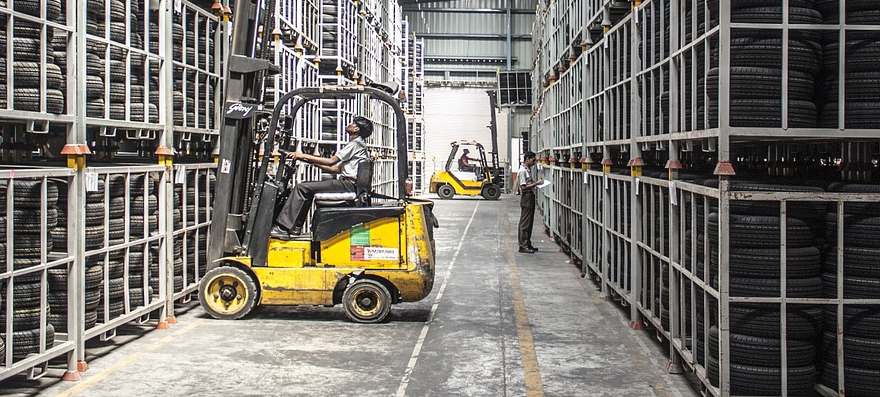September 20, 2018
 Interview with Lisa Harrington, global logistics author, supply chain consultant, senior research scholar, and John Goldschmidt, Head of Product Growth at Qlicket
Interview with Lisa Harrington, global logistics author, supply chain consultant, senior research scholar, and John Goldschmidt, Head of Product Growth at Qlicket
As the company’s solution and customer base continues to grow, John regularly meets with managers and HR professionals who are seeking to make their frontline workforce safer, more satisfied, and more productive. He is always available via email at johng@qlicket.com.
This is Part 2 of a two-part series. Part 1 looked at the talent shortage on the supply chain front lines – the distribution center – how severe is it and what’s causing it. This part explores what companies can do to help solve the front-line worker shortage problem.
JOHN:
Lisa, it’s a pleasure catching up with you again regarding the labor shortage in front-line workers. Now that we’ve discussed the issue at hand, let’s talk about potential ways companies can handle this and make their current employees happy and not want to quit.
So, my questions become: what do you do to attract front-line people and secondly to retain them? And then how do you know if you’re doing the right thing?
LISA:
So, a lot of companies survey their warehouse employees, their truck drivers, and so on, but there’s a great deal of latency in those efforts. By that I mean they do a survey, and then don’t get around to sharing results until sometimes months later. And they may not even share the results completely with the people who took the survey – the front line folks.
This means that companies are always “behind the curve” in knowing what’s going on in the minds of their warehouse or distribution center people. So they’re managing essentially by looking in the “rearview mirror” – rather than continually taking the pulse of their employees on at the forefront of the supply chain.
But thanks to new technology, it doesn’t have to be that way. Companies can continuously gather feedback from their employees, get rid of the information latency, and really find out on a day to day basis even the simplest things like, “How are you doing today? What do you think about ‘X’? Do you have a problem at your work site and what do you suggest we do about it?”
Asking for this kind of feedback does one important thing: It enrolls the frontline workers in their job and in their work situation. It gives them a bigger stake in managing their jobs and the company’s operations. Rolling up all of those suggestions gives companies a powerful view into how things are running on the warehouse floor today, and what could be done to make them run better and keep people happier.
JOHN:
Yeah, fantastic well that all makes sense with regard to the trials of talent acquisition in how little technology goes a long way, but you know you have to hear from employees in order to retain them.
How does automation come into play? What do you think it will do to the current state of affairs?
LISA:
I don’t think automation will radically change anything in terms of being better positioned to attract workers. This is especially in developed markets like the U.S. and the EU where these jobs are not extremely attractive.
In fact, I did a recent survey on supply chain digitalization and in the physical supply chain robotics is probably the hottest area for distribution centers, for example. But the robots don’t take over. They don’t replace humans. They work with humans. Humans will always be important in getting the work of the distribution center done – even if they evolve to working hand-in-hand with robots. There’s still that human element that I don’t think will go away.
No matter how you look at it, our industry – especially in developed markets – will face a frontline talent shortage for many years to come. And it’s likely to get worse and more extreme.
JOHN:
How does image come into play? What I mean by that is – how do you make employees comfortable that there’s an opportunity for growth in the organization. You mentioned earlier that there’s an image situation that the industry is battling now. I think a lot of it has to do with is it a good place to grow, a lot of it is: is it a cool place to work but how do you know? What are some ways that organizations can start to convey that or to make them make employees feel like they’ll be happy working there?
LISA:
With regard to image just look at what happened on Amazon Prime Day – the huge demonstrations that took place in Spain and Germany about working conditions at Amazon. That’s not a good thing. No company wants that.
Developing and maintaining an image is essential in attracting and keeping talent. So, basically companies have to get really smart and social media “savvy” because their employees are typically younger and live on social media. They have to brand themselves consciously as a great place to work – and not a dead-end job or a “wait-till-I-get-a-better-offer” job.
I think companies have to get really smart about communicating. Companies need to utilize social media as a platform to actually show people how the company operates. Once they get this down, and do the right things in terms of taking care of their employees (creating career paths and so on), then they have to communicate what they have done and are doing. And they have to communicate it constantly – internally and externally – in ways that aren’t just public relations chatter, but ways that really make a difference and tell the truth.
Workers tune into this communication. They know when it is real and when it is just marketing fluff or lip service.
JOHN:
You alluded earlier to how workplaces that are tech savvy and offered benefits will do a better job of attracting talent in the blue-collar workspace – what are some other perks or benefits that companies sometimes offer to attract talent in the warehouse and logistics space?
LISA:
Everybody wants to feel like he or she has a future. Right. So, companies need to have a good career path that is tailored to each individual so that it’s not just sort of a rote thing that if you didn’t make it on this level you don’t get to advance to the next level. I think a career path that makes people feel valued and makes them think they have a future with the company goes a long way. That’s essential. And it starts with the basics – with knowing that they and their input – no matter how small – is valued and will be taken into account in how the company operates and how it treats its people.
JOHN:
So true! Communication leads to involvement and buy-in.
Well Lisa, our time is up but thanks again for sitting down this week, it’s always a pleasure to get your thoughts.
LISA:
Thank you John, I’m happy to catch up any time!


